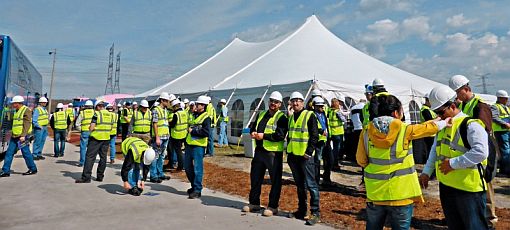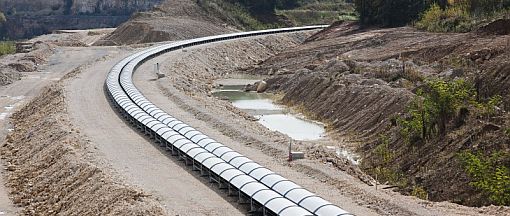Luckily, it’s concrete!
This high-impact advertising motto in Germany popped into my mind while listening to the talk given by Jacques Burdin at the international conference “The Future of Cement”, which was held in Paris from 06.06.-08.06.2017. He reported on the use of “concrete in tunnels” and gave an overview of major tunnel construction projects. Stretching 24.5 km, the Norwegian Lærdal Tunnel is currently the longest road tunnel in the world. The Gotthard Base Tunnel with its 57 kilometres is regarded as the world’s longest railway tunnel. With the Brenner Base Tunnel, another gigantic railway tunnel is set for completion by 2025, which, covering 55 km, will be the heart of the Scandinavian-Mediterranean corridor from Helsinki in Finland to Valletta on Malta. Concrete used in tunnel construction must meet already high and constantly rising requirements. Depending on the specific application, vibrated or self-compacting concretes are used. Formidable challenges are presented by both long and deep tunnels, where temperatures can reach up to 40°C. In such mammoth projects, workability, practical time of use and heat of hydration are important parameters, which are steadily improved.
Besides all the technical papers, I was especially impressed by the case studies highlighting the use of concrete. Along with imposing concrete architecture in building construction, “MOSE, the Venice protection system against floods” is another spectacular project. With the flood barrage made up of moveable flood gates, the historical centre of Venice will be protected against flooding. In this context, Giuseppe Marchese reported on a newly developed marine concrete.
The conference was held in honour of Louis Vicat, the French engineer who with his studies established basic principles for understanding both cement and lime mortar. In the construction of the Dordogne Bridge of Souillac, he used his new construction material, hydraulic lime, for the first time. Our modern bridge structures built to sometimes dizzying heights all draw on his fundamental research and today they represent masterpieces of engineering. Just like the towers soaring ever higher into the sky. For the currently tallest tower in the world, the Burj Khalifa in Dubai, cement, naturally, played a part. How breath-taking it is to look across the city from the 125th floor. For the newly planned tallest tower in the world, too, which is scheduled for completion in 2020, again in Dubai, cement will play a fundamental role.
Cement is regarded as the most commonly used material in the world. It is used in innumerable applications, for durable, outstanding, beautiful but also reasonably priced and functional building structures.
I have experienced two superlatives, the tallest tower in the world and the Berlin Wall, cement having played a crucial part in both. And from this experience, I can say, any tower is better than a wall!
Yours
Anett Fischer
Editor-in-Chief
ZKG International





